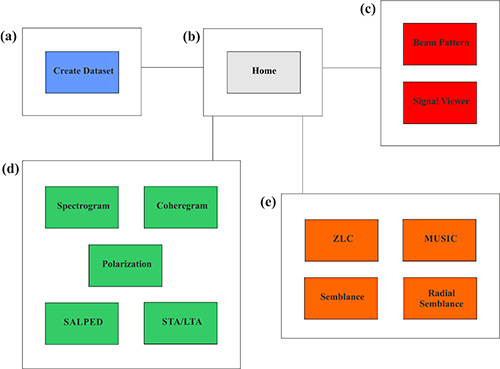MISARA: Matlab Interface for Seismo-Acoustic aRray Analysis

Minio V., L. Zuccarello, S. De Angelis, G. Di Grazia, and G. Saccorotti (2023).
Seismol. Res. Lett. XX, 1–14, https://doi.org/10.1785/0220220267
Abstract
Volcanic activity produces a broad spectrum of seismic and acoustic signals whose characteristics provide important clues on the underlying magmatic processes. Networks and arrays of seismic and acoustic sensors are the backbone of most modern volcano monitoring programs. Investigation of the signals gathered by these instruments requires efficient workflows and specialist software. The high sampling rates, typically 50 Hz or greater, at which seismic and acoustic waveforms are recorded by multistation networks and dense arrays leads to the rapid accumulation of large volumes of data, making the implementation of efficient data analysis workflows for volcano surveillance a challenging task. Here, we present an open‐source MATLAB graphical user interface, MISARA (Matlab Interface for Seismo‐Acoustic aRray Analysis), designed to provide a user‐friendly workflow for the analysis of seismoacoustic data in volcanic environments. MISARA includes efficient algorithm implementations of well‐established techniques for seismic and acoustic data analysis. It is designed to support visualization, characterization, detection, and location of volcano seismoacoustic signals. Its intuitive, modular, structure facilitates rapid, semiautomated, inspection of data and results, thus reducing user effort. MISARA was tested using seismoacoustic data recorded at Etna Volcano (Italy) in 2010, 2011, and 2019, and is intended for use in education and research, and to support routine data analysis at volcano observatories.


Devi effettuare l'accesso per postare un commento.